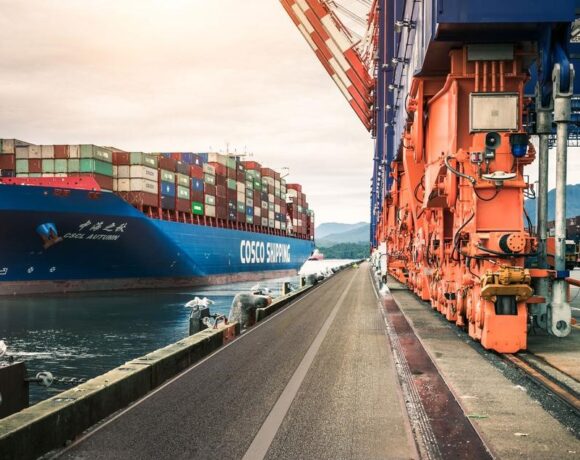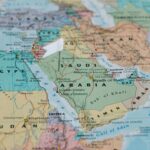Broad Strength Drives Commodities Sector to 26-month High– Saxo Bank MENA

A strong start to the year has seen one of the leading commodities indices reach a 26-month high, potentially signalling a breakout of a two-year horizontal range that emerged following the 2020–2022 pandemic- and Ukraine war-led surge and subsequent correction. Overall, the Bloomberg Commodity Total Return Index (BCOMTR) trades up 5.9% so far this year and has gained 13.5% in the past year. The index, which is tracked by numerous exchange-traded funds, trades a basket of 24 major commodity futures split close to evenly between energy, metals, and agriculture.
While gold and silver have attracted most of the attention, given the recent surge amid tightness in the cash market and a rush of physical bars to COMEX-monitored vaults in the US, all sectors are showing gains. In agriculture, the grains sector has started to recover following a near three-year slide, with corn and soybeans leading the gains. Other commodities on the move within the agriculture sector include Arabica coffee, up 123% in the past year, as well as strong gains across livestock amid tightness in the US meat market.
The current focus on tariffs and their potential negative impact on global growth has so far been weighing mostly on the energy and industrial metals sectors. However, the latter is seeing a divergence between copper and aluminium strength—two energy transition metals—and weakness in zinc and nickel, two metals used to galvanise iron and steel and for the production of stainless steel.
The Invesco Bloomberg Commodity UCITS ETF, one of several exchange-traded funds that has the objective of tracking and replicate the return of the BCOMTR has following a two-year period of sideways action once again rallied to challenge resistance.
Drivers supporting our long-term bullish view on commodities
Whether these strong gains can be maintained in the short term remains to be seen, but overall, we believe the direction of travel over time remains to the upside. Several major themes support this belief, creating opportunities in commodities as an investment.
Among others, we focus on:
Deglobalisation: The evolving geopolitical landscape is increasingly defined by competition between the United States and China, a rivalry spanning economic, military, technological, and ideological domains. This power struggle has led to a shift in global supply chain strategies, with governments and businesses prioritizing security and resilience over cost efficiency. A key consequence is the growing importance of commodities, as nations seek to secure access to critical raw materials, energy sources, and food supplies. The push for self-sufficiency and “friendshoring”—favoring trade within allied nations—could lead to increased trade barriers, reduced global efficiencies, and ultimately higher costs. These inflationary pressures, coupled with efforts to onshore production, will likely reinforce the long-term demand for industrial metals, energy, and agricultural commodities.
Defence: Rising geopolitical tensions have already led to a surge in global military expenditures. Governments are ramping up investments in defense capabilities, from traditional military hardware to emerging fields such as cybersecurity, space technology, and AI-driven warfare. This trend extends beyond weapons production to the strategic stockpiling of critical raw materials, including rare earth elements, nickel, copper, and aluminum, which are essential for modern defense systems. Given the complex and often vulnerable supply chains for these materials, nations are increasingly securing long-term supply contracts and diversifying sourcing strategies, further reinforcing demand.
Decarbonisation: The transition to cleaner energy sources and the push to mitigate climate change are reshaping commodity markets. Governments and corporations worldwide are investing in renewable energy infrastructure, electric vehicles (EVs), and energy-efficient technologies. This shift is driving demand for key transition metals such as:
- Copper, essential for electrical grids, EVs, and battery storage.
- Aluminum, widely used in lightweight transportation and solar panel frames.
- Lithium, cobalt, and nickel, crucial for battery technologies.
- Silver and rare earth elements, vital for solar panels, wind turbines, and advanced electronics.
Additionally, rising global temperatures are increasing the demand for cooling technologies, such as air conditioning, and together growing power demand from datacenters handling AI and cloud computing, and industrial electrification, these developments will further boost power consumption and with that demand for uranium and natural gas to ensure stable baseloads.
De-dollarisation: A shift away from US dollar dominance is underway as nations seek to reduce their reliance on the dollar for trade and reserve holdings. This trend is particularly evident among BRICS nations (Brazil, Russia, India, China, and South Africa), which are expanding local currency settlements and increasing their purchases of gold as a hedge against financial instability. Since the 2022 sanctions on Russia and the freezing of its foreign reserves, many central banks have accelerated their gold acquisitions, with purchases exceeding 1,000 tonnes in the past three years, according to the World Gold Council. This structural shift is supporting demand for gold and other stable commodities, as countries seek alternatives to fiat currencies in a fragmented, multi-polar financial system.
Debt and fiscal stability risks: Soaring global debt levels and persistent fiscal deficits are raising concerns about long-term economic stability. Governments have significantly increased borrowing to support pandemic recovery, social programs, and defense spending, leading to higher long-term interest rates and inflationary pressures. Investors are increasingly seeking refuge in hard assets such as gold, silver, copper, and platinum, which are historically viewed as stores of value during times of financial uncertainty. The risk of sovereign debt crises, currency devaluations, and systemic financial instability could further reinforce this trend, making metals an attractive hedge against economic turbulence.
Demographics: Demographic shifts are reshaping labor markets, economic growth patterns, and commodity demand. In many parts of the world, aging populations and declining birth rates are reducing the size of the workforce while increasing the number of the so-called baby boomers retiring with significant savings and the prospect of a longer life expectancy. This dynamic creates several economic challenges:
- Fewer workers supporting a growing number of retirees, leading to labor shortages and rising wage pressures.
- Increased healthcare and infrastructure spending to accommodate aging populations.
- Higher demand for medical technology, pharmaceuticals, and housing modifications, all of which require raw materials.
At the same time, in emerging economies with younger populations, rapid urbanization and rising middle-class consumption are driving demand for energy, transportation, and infrastructure development. The combination of these opposing demographic trends is likely to support long-term demand for commodities, particularly in sectors such as healthcare, construction, industrial manufacturing, and even fuel demand as baby boomers
Climate change: Climate change is increasingly becoming a bullish factor for agricultural commodities, with many agricultural regions experiencing more frequent droughts, heatwaves, and unpredictable rainfall patterns, leading to more volatile growing conditions for several key food commodities. Especially those that are heavily dependent on specific geographical and climatic conditions, such as cocoa and coffee.
Last Updated on 1 month by News Desk 1













